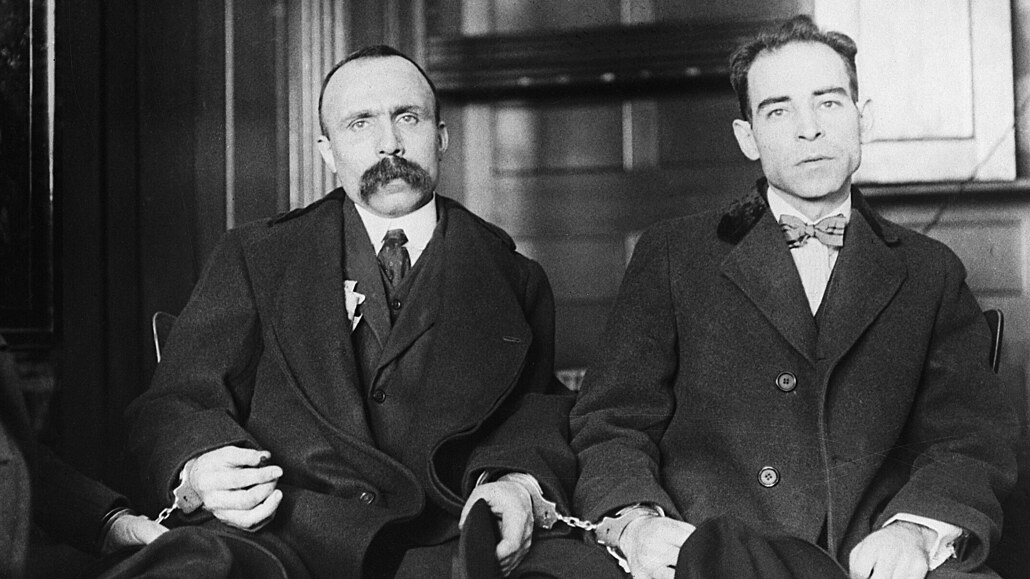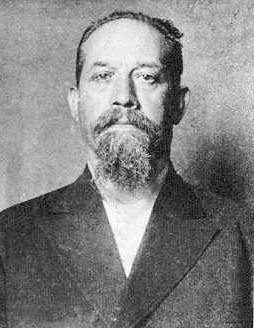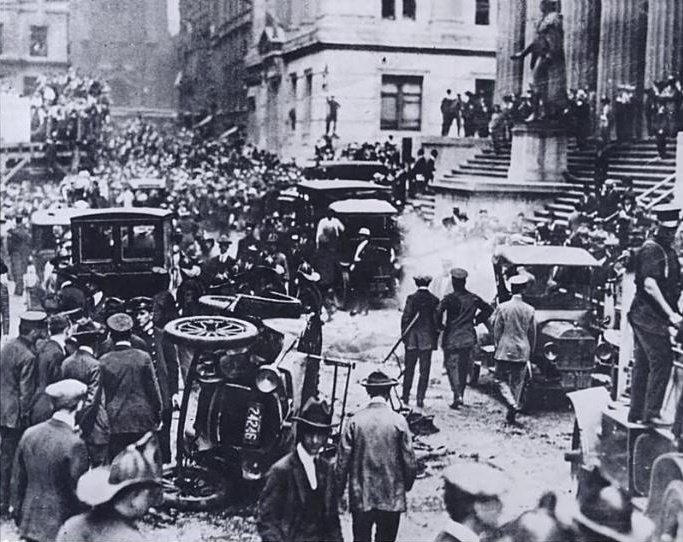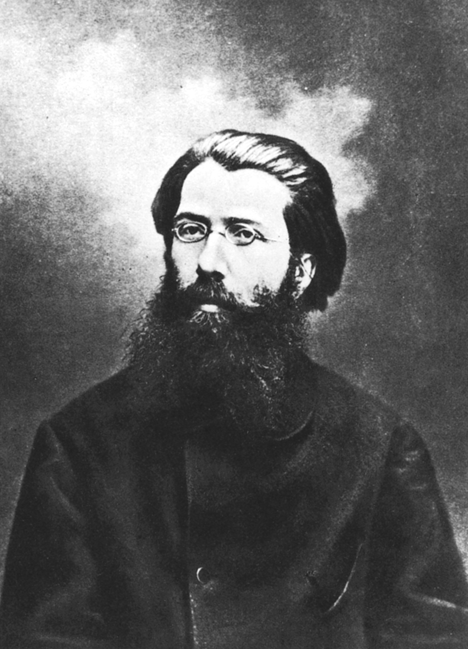|
Galleanists
(Italian for Galleanists) are followers or supporters of the Italian immigrant insurrectionary anarchist Luigi Galleani, who operated most notably in the United States following his immigration to the country. The vast majority of ''Galleanisti'' or Galleanists were similarly poor and working-class Italian immigrants or Italian Americans, especially anarchists and those involved in the labor movement. Galleanists remain the primary suspects in a campaign of bombings between 1914 and 1920 in the United States. Galleani and his group promoted radical anarchism by speeches, newsletters, labor agitation, political protests, secret meetings, and, above all, direct action, often referred to as propaganda of the deed. Many used bombs and other violent means to promote their political position, practices that Galleani actively encouraged but in which he apparently did not participate, except for writing the bomb-making manual '' La Salute è in voi!''. Composition The Galleani ... [...More Info...] [...Related Items...] OR: [Wikipedia] [Google] [Baidu] |
Mario Buda
Mario Buda (1883–1963) was an Italian anarchist who was active among the militant American Galleanists in the late 1910s and best known for being the likely perpetrator of the 1920 Wall Street bombing, which killed 40 people and injured hundreds. Historians implicate Buda in multiple bombings, though the documentary evidence is insufficient to prove his responsibility. He emigrated from Italy's Romagna region, a cultural connection that would recur throughout his life. After working itinerant jobs across the United States and a short return to Romagna, Buda settled in Boston's Roxbury neighborhood, where he ran a cleaning company and grew close to Italian anarchists and disciples of Luigi Galleani. The Galleanists Sacco and Vanzetti were among his best friends. Buda traveled with a Galleanist group to Mexico for several months in 1917 to prepare for European revolution that never arrived. With waning morale and news of Galleani's deportation, Buda and the Galleanists bega ... [...More Info...] [...Related Items...] OR: [Wikipedia] [Google] [Baidu] |
1919 United States Anarchist Bombings
From April through June 1919, a series of bombings were carried out or attempted across the United States by Galleanists (followers of Italian insurrectionary anarchist Luigi Galleani). The targets included anti-immigration politicians, anti-anarchist officials, and prominent businessmen, as well as a journalist and a church. Almost all of the bombs were sent by mail. The bombings were one of the major factors contributing to the First Red Scare. Two people were killed, including one of the bombers, and two injured. April mail bomb attacks In late April 1919, at least 36 booby trap dynamite-filled bombs were mailed to a cross-section of prominent politicians and appointees, including the Attorney General as well as justice officials, newspaper editors and businessmen, including John D. Rockefeller. Among all the bombs addressed to high-level officials, one bomb was addressed to the home of a Department of Justice Bureau of Investigation (BOI) field agent once tasked with i ... [...More Info...] [...Related Items...] OR: [Wikipedia] [Google] [Baidu] |
Preparedness Day Bombing
The Preparedness Day bombing was a bombing in San Francisco, California, United States, on July 22, 1916, of a parade organised by local supporters of the Preparedness Movement which advocated American entry into World War I. During the parade a suitcase bomb was detonated, killing 10 and wounding 40 in the worst terrorist attack in San Francisco's history. Two labor leaders, Thomas Mooney and Warren Billings, were convicted in separate trials and sentenced to death, later commuted to life in prison. Later investigations found the convictions to have been based on false testimony, and the men were released in 1939 and eventually pardoned. The identity of the bombers has never been determined. Prelude By mid-1916, after viewing the carnage in Europe, the United States saw itself poised on the edge of participation in World War I. Isolationism remained strong in San Francisco, not only among radicals such as the Industrial Workers of the World ("the Wobblies"), but also among ... [...More Info...] [...Related Items...] OR: [Wikipedia] [Google] [Baidu] |
Insurrectionary Anarchist
Insurrectionary anarchism is a revolutionary theory and tendency within the anarchist movement that emphasizes insurrection as a revolutionary practice. It is critical of formal organizations such as labor unions and federations that are based on a political program and periodic congresses. Instead, insurrectionary anarchists advocate informal organization and small affinity group based organization. Insurrectionary anarchists put value in attack, permanent class conflict and a refusal to negotiate or compromise with class enemies. Associated closely with the Italian anarchist movement, the theory of insurrectionary anarchism has historically been linked with a number of high-profile assassinations, as well as the bombing campaigns of the Galleanisti and Informal Anarchist Federation (FAI). History Development Among the earliest inspirations for insurrectionary anarchism was Max Stirner's 1845 book ''The Ego and Its Own'', a tract that upheld a kind of proto-individualis ... [...More Info...] [...Related Items...] OR: [Wikipedia] [Google] [Baidu] |
Insurrectionary Anarchism
Insurrectionary anarchism is a revolutionary theory and tendency within the anarchist movement that emphasizes insurrection as a revolutionary practice. It is critical of formal organizations such as labor unions and federations that are based on a political program and periodic congresses. Instead, insurrectionary anarchists advocate informal organization and small affinity group based organization. Insurrectionary anarchists put value in attack, permanent class conflict and a refusal to negotiate or compromise with class enemies. Associated closely with the Anarchism in Italy, Italian anarchist movement, the theory of insurrectionary anarchism has historically been linked with a number of propaganda of the deed, high-profile assassinations, as well as the bombing campaigns of the Galleanisti and Informal Anarchist Federation (FAI). History Development Among the earliest inspirations for insurrectionary anarchism was Max Stirner's 1845 book ''The Ego and Its Own'', a tract t ... [...More Info...] [...Related Items...] OR: [Wikipedia] [Google] [Baidu] |
Propaganda Of The Deed
Propaganda of the deed, or propaganda by the deed, is a type of direct action intended to influence public opinion. The action itself is meant to serve as an example for others to follow, acting as a catalyst for social revolution. It is primarily associated with acts of violence perpetrated by proponents of insurrectionary anarchism in History of anarchism, the late 19th and early 20th century, including bombings and assassinations aimed at Statism, the state, the ruling class in a spirit of anti-capitalism, and church arsons targeting religious groups, even though propaganda of the deed also had nonviolent resistance, non-violent applications. These acts of terrorism were intended to ignite a "spirit of revolt" by demonstrating the state, the middle and upper classes, and religious organizations were not omnipotent as well as to provoke the State to become escalatingly repressive in its response. The 1881 London Social Revolutionary Congress gave the tactic its approval. Theore ... [...More Info...] [...Related Items...] OR: [Wikipedia] [Google] [Baidu] |
La Salute è In Voi
' ("Health Is in You!" or "Salvation Is Within You!") was an early 1900s bomb-making handbook associated with the Italian-American Galleanisti, followers of anarchist Luigi Galleani. The anonymous authors advised impoverished workers to overcome their despair and commit to individual, revolutionary acts. The Italian-language handbook offered plain directions to give non-technical amateurs the means to build explosives. Though this technical content was already available in encyclopedias, applied chemistry books, and industrial sources, ''La Salute è in voi'' wrapped this content within a political manifesto. Its contents included a glossary, basic chemistry training, and safety procedures. Its authors were likely Galleani and his friend Ettore Molinari, a chemist and anarchist. The handbook was first advertised in 1906 in Galleani's ''Cronaca Sovversiva'', an anarchist newspaper read by his American followers. American police and historians would use the handbook to profil ... [...More Info...] [...Related Items...] OR: [Wikipedia] [Google] [Baidu] |
Wall Street Bombing
The Wall Street bombing was an act of terrorism on Wall Street at 12:01 pm on Thursday, September 16, 1920. The blast killed 30 people immediately, and another 10 later died of wounds that they sustained in the blast. There were 143 seriously injured, and the total number of injured was in the hundreds. The bombing was never solved, although investigators and historians believe it was carried out by Galleanists, a group responsible for a series of bombings the previous year. Attack At noon, a horse-drawn wagon passed by lunchtime crowds on Wall Street and stopped across the street from the headquarters of the J.P. Morgan & Co. bank at 23 Wall Street, on the Financial District's busiest corner. Inside the wagon, of dynamite with of heavy, cast-iron sash weights exploded in a timer-set detonation, sending the weights tearing through the air. The horse and wagon were blasted into small fragments, but the driver was seen by witnesses leaving the vehicle and escaping do ... [...More Info...] [...Related Items...] OR: [Wikipedia] [Google] [Baidu] |
Frank Abarno
The Bresci Circle was a group of New York City anarchists who are remembered for a failed bombing attempt on St. Patrick's Cathedral in 1915, in which two of its members were arrested. The group was named after Gaetano Bresci, a New York anarchist who killed King Umberto I of Italy. Origins In July 1900, the anarchist Gaetano Bresci assassinated King Umberto I of Italy. Several months earlier, Bresci had been living in New York City. According to Thomas Tunney of the New York Police Department, Bresci had attended an Elizabeth Street meeting of anarchists where he accused the others of being cowards and they accused him of being a police spy. The meeting was called off as its heat threatened to attract police attention, but Bresci was incensed and it is implied that this affront precipitated into his plot to return to Italy and become a martyr. A group of New York City anarchists subsequently formed as the Bresci Circle, in Bresci's honor. By 1914, almost 600 members met re ... [...More Info...] [...Related Items...] OR: [Wikipedia] [Google] [Baidu] |
Anarchist
Anarchism is a political philosophy and Political movement, movement that seeks to abolish all institutions that perpetuate authority, coercion, or Social hierarchy, hierarchy, primarily targeting the state (polity), state and capitalism. Anarchism advocates for the replacement of the state with Stateless society, stateless societies and voluntary Free association (communism and anarchism), free associations. A historically left-wing movement, anarchism is usually described as the libertarian wing of the socialist movement (libertarian socialism). Although traces of anarchist ideas are found all throughout history, modern anarchism emerged from the Age of Enlightenment, Enlightenment. During the latter half of the 19th and the first decades of the 20th century, the anarchist movement flourished in most parts of the world and had a significant role in Labour movement, workers' struggles for emancipation. #Schools of thought, Various anarchist schools of thought formed during ... [...More Info...] [...Related Items...] OR: [Wikipedia] [Google] [Baidu] |
Luigi Bacchetti
Luigi (; ) is a character created by Japanese video game designer Shigeru Miyamoto. Part of Nintendo's ''Mario'' franchise, he is a kind-hearted, cowardly Italian plumber, and the younger fraternal twin brother and sidekick of Mario. Like his brother, Luigi's distinctive characteristics include his large nose and mustache, overalls, green hat, and high-pitched, exaggerated Italian accent. Luigi first appeared in '' Mario Bros.'', a 1983 platform game, in which he was originally designed as a palette swap of Mario with a green color scheme; Luigi has since appeared in multiple games and other media throughout the ''Mario'' franchise, in which developed a personality and style of his own. As his role in the ''Mario'' franchise progressed, Luigi evolved into a physically distinct character, and become the main protagonist of ''Mario is Missing!'' and the ''Luigi's Mansion'' series. Charles Martinet voiced Luigi from 1992 to 2023, when he was succeeded by Kevin Afghani. Luigi ... [...More Info...] [...Related Items...] OR: [Wikipedia] [Google] [Baidu] |









